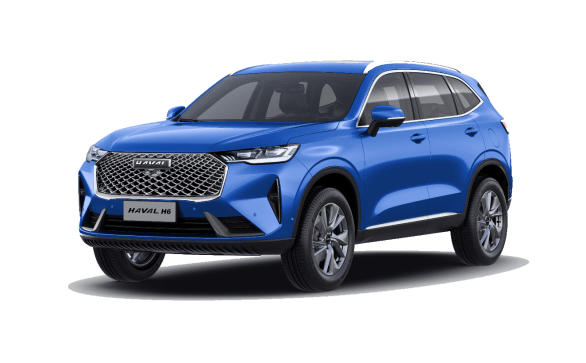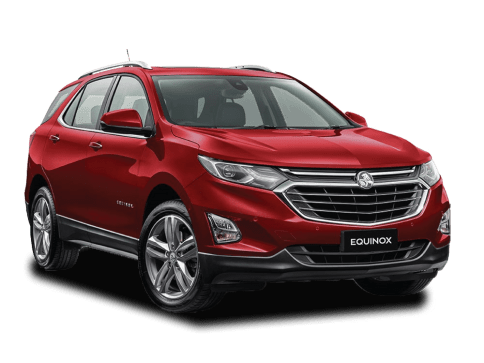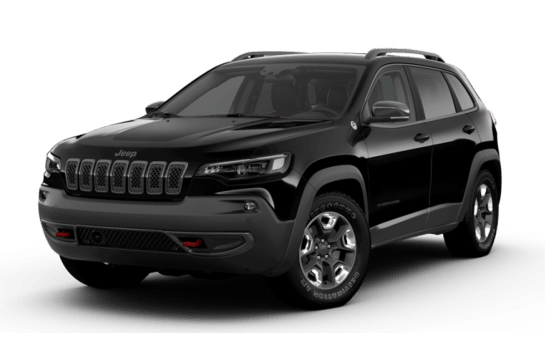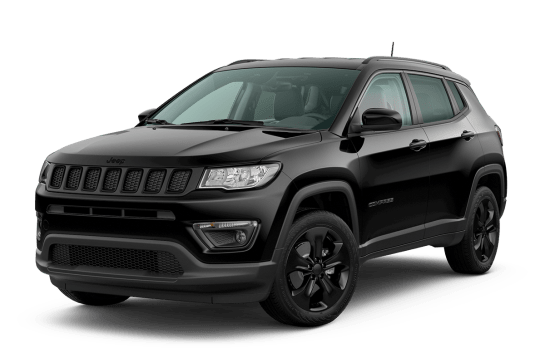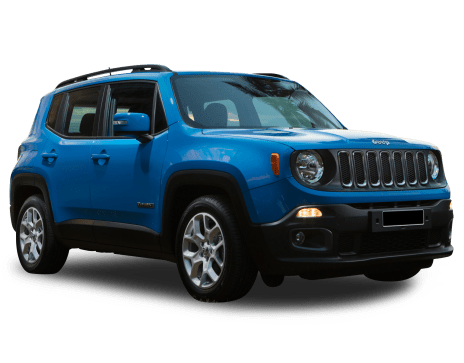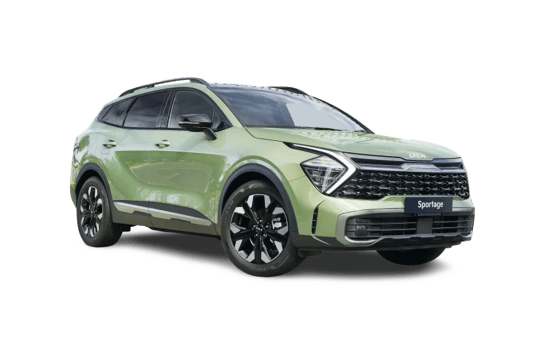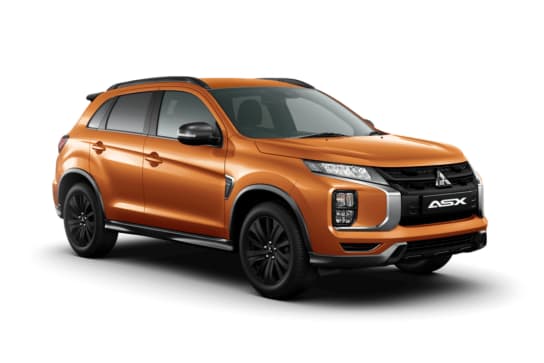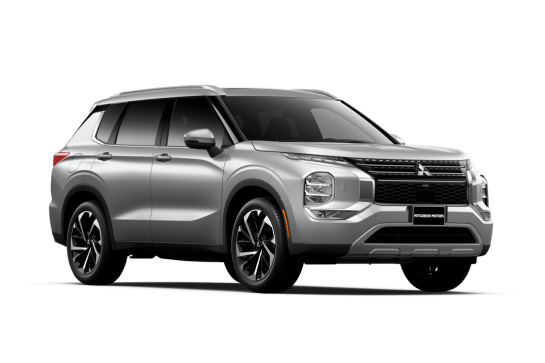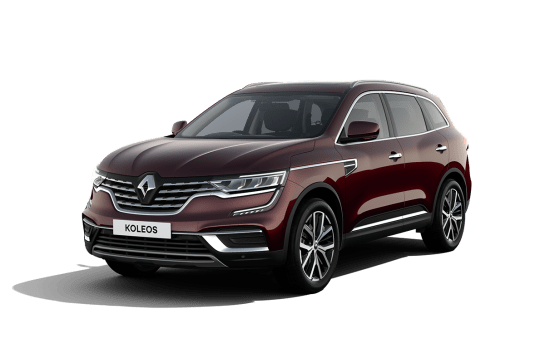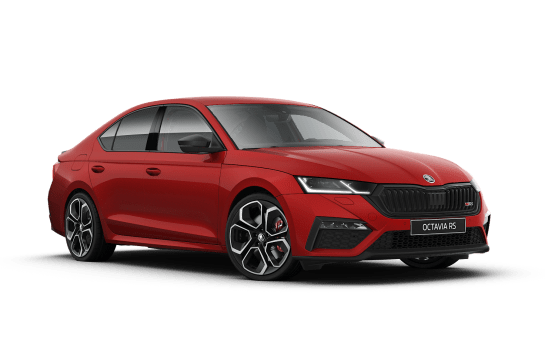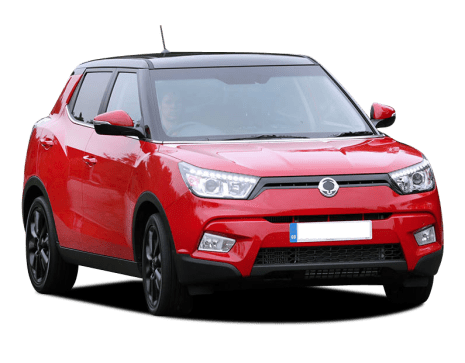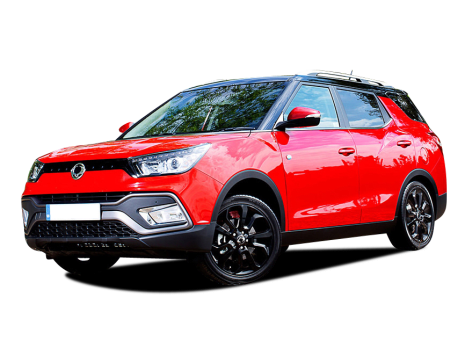
Ssangyong Tivoli XLV VS Haval H6
Ssangyong Tivoli XLV
Likes
- Roomy back seat
- Big boot
- Diesel-AWD drivetrain a point of difference
Dislikes
- No petrol will mean few buyers
- Full specs to be confirmed
- Four-star safety (Euro NCAP)
Haval H6
Likes
- Great value
- Looks stunning
- Nice to drive
Dislikes
- No hybrid version
- Thirsty petrol engine
- No diesel version
Summary
Ssangyong Tivoli XLV
The SsangYong Tivoli XLV is about as unknown to Australian customers as cheeseburgers are to the tribespeople of the Amazon.
That is to say, if I asked your opinion of the SsangYong Tivoli XLV, you’d probably have no idea what I was on about. You may be unsure of its origins, unclear of its intentions, and generally baffled by the concept of it. The Amazonians may well feel the same way about burgers.
However, if Korean SUV specialist SsangYong has its way, the Tivoli XLV will become as hip and desirable, as Instagrammable and indulgent as the most clickable cheeseburgers out there. Geez, I’m hungry.
The Tivoli XLV is essentially a longer, taller version of the shorter, lower Tivoli, which is also coming to Australia. It keeps the Tivoli part of the name because it’s largely very similar, but the XLV has some points of difference: it’s all-wheel drive only, it’s diesel only, and it’s clearly one of the most practical small SUVs in the class.
What does XLV stand for? According to SsangYong, the acronym represents “eXciting smart Lifestyle Vehicle”.
Scratch that. Think of it as the 'eXtra Large Version' of the brand’s smallest vehicle, and you’ll be most of the way to understanding just what this big small SUV is all about.
| Safety rating | |
|---|---|
| Engine Type | 1.6L turbo |
| Fuel Type | Diesel |
| Fuel Efficiency | 6.3L/100km |
| Seating | 5 seats |
Haval H6
There are good surprises and bad surprises. Like the time I was driving my ute and the steering wheel came off. Bad surprise. Or the time the chicken shop accidentally gave me a large chips when I paid for a medium. Good surprise. The Haval H6 also surprised me. And it was up there with a large chips type of surprise.
See, my expectations of Haval have been of a brand which is really big in China where its owned by Great Wall Motors, but can’t keep up with the likes of Toyota and Mazda when it comes to driving and styling. Instead, their strength seemed to be just value-for-money.
Surprise! The new generation H6 isn’t just good value-for-money any more. It’s still really well priced but it has stunning looks, too. But that wasn’t the biggest surprise.
If you are considering a mid-sized SUV such as a Toyota RAV4 or Mazda CX-5, I strongly suggest you widen the net and consider the H6, too. Let me explain.
| Safety rating | |
|---|---|
| Engine Type | 2.0L turbo |
| Fuel Type | Premium Unleaded Petrol |
| Fuel Efficiency | 9.8L/100km |
| Seating | 5 seats |
Verdict
Ssangyong Tivoli XLV6.5/10
Depending on the pricing and specifications, the SsangYong Tivoli XLV might well offer an interesting alternative to the mainstream small SUV crowd. The safety score is a bit of a deterrent, but that may not rule it out for all buyers.
It’s almost like this is a provisional review, because we simply don’t know much about the brand’s strategy ahead of the local range rollout in November.
One thing’s for sure: just like a cheeseburger or any good laboured pun, we can’t wait to get our hands on some of the finer details from SsangYong Australia.
Would you consider a car with a four-star Euro NCAP crash score? Tell us what you think in the comments section below.
Haval H67.9/10
The H6 could be the turning point for Haval in Australia. The brand’s first big success that changes the way Aussies view this Chinese carmaker. The H6’s great value and stunning looks will win over many but add an excellent warranty, advanced safety tech, plus the surprisingly good, and you have a package that appears right up there with the likes of the Toyota RAV4 and Mazda CX-5.
The sweet spot of the range would have to be the Lux - the car I tested with its leatherette seats, privacy glass and dual-zone climate control.
Design
Ssangyong Tivoli XLV6/10
One look and you might think 'honey I shrunk the Stavic', and that’s not too bad of a summary. There are some ungainly touches to the design of the Tivoli XLV - as you might expect from a small SUV that has been stretched.
But from some angles, it doesn’t look too bad. The front end is quite fetching, I think, with those projector halogen headlights with LED daytime running lights cutting a different shape to many of its rival models sold in our market. However, the overtly lipped quarter panels aren’t to all tastes, and the curved, clear-lensed tail-lights aren’t going to win any beauty contests.
I don’t think it’s ugly in the same way the original Stavic was… but SsangYong let us in on a secret at the launch event in Korea: there’s an updated, facelifted version of the Tivoli XLV and the regular Tivoli due in June 2019. It may be worth waiting for, because not only will it bring a new, more modern look, it will probably add equipment and safety features.
What do you think? Does it look more or less attractive than, say, a Honda HR-V, Mitsubishi ASX or Nissan Qashqai? Tell us in the comments section below.
Now, size: the XLV is essentially a stretched, more family-friendly version of the Tivoli. Both are built on the same line, and everything is pretty much the same from the C-pillar forward. It measures 4440mm long (which is 198mm longer than the standard Tivoli, both on a 2600mm wheelbase), 1798mm wide and 1635mm tall (Tivoli is 1590mm). The XLV is longer than any other small SUV it competes against.
Australian customers are expected to be able to choose between an array of eight body colours and a contrasting roof finish. One really smart combination is the red body and black roof, and high-spec models are expected to get flashy 18-inch wheels (with 16s on low spec models).
The benefits of the Tivoli XLV’s stretched body are clearest in the boot area, which beats some mid-sized SUVs.
Haval H68/10
This new generation H6 is ridiculously good looking. So much so that my Dad thought it was a Porsche when I arrived to pick him up. But in saying that Dad also has a glass coffee table supported by a golden naked lady and thinks I work in a car dealership, despite me explaining that motoring journalism is an actual job.
He’s not wrong, for once. Well, it doesn’t look like a Porsche, but I can see what he means given the way the LED strip across the tailgate lights up and connects with the tail-lights either side.
I don’t know what kind of deal with the devil the H6’s designer made but there isn’t an angle from which this SUV looks nothing short of beautiful. There’s the flashy but not over-the-top grille, the sleek headlights, and the smooth lines in profile which wrap around to the curvaceous back end.
Havals in the past have seemed low quality and unfinished, but this new H6 seems the opposite.
The same goes for the minimalist cabin. Those screens house almost every function except for the climate control and that clears the dashboard of buttons.
This cabin is a premium design with a floating centre console and metallic trim. Stepping up to the Lux from the Premium adds 'leatherette' upholstery, a leather steering wheel and then the Ultra takes the high-end feeling further with a 12.3-inch media display and a panoramic sunroof.
As for the dimensions, the H6 is larger than most mid-sized SUVs but smaller than a large SUV at 4653mm end to end, 1886mm wide and 1724 mm tall.
The six exterior colours are, 'Hamilton White', 'Ayres Grey', 'Burgundy Red', 'Energy Green', 'Sapphire Blue' and 'Golden Black.'
Practicality
Ssangyong Tivoli XLV8/10
If you’re buying the Tivoli XLV, it’s arguably because it’s a compact SUV with the interior space of a bigger SUV inside. With a claimed cargo capacity of 720 litres (VDA), that makes sense. The XLV adds 297L more space (VDA) over the Tivoli, with a bigger boot than some very big SUVs.
In person the boot looks pretty big, but not as enormous as the numbers suggest. The fact there’s a false floor set-up is handy, though, and the packaged from SsangYong to be able to engineer so much boot space and still offer a four-wheel-drive system and multilink rear suspension is almost genius. Many brands can’t do it as well as SsangYong has. And going by SsangYong’s promise to fit a full-size spare wheel to all of its AWD models, the packaging is even more impressive.
It was handy for us to drive the XLV alongside the Musso and Rexton, both of which are newer-generation models that feel more modern inside. That isn’t to say the XLV feels old - it’s just not as special as its bigger siblings. Again, the face-lifted model due in 2019 could go a ways to fixing that.
If I had to compare the quality and design of the XLV to any car, it would be the old Hyundai ix35. You remember that small-to-mid-size SUV that came before the Tucson, which was on sale here from 2010 to 2015? Well, its cabin design and materials were fine, but nothing special. A bit like the Mitsubishi ASX, which launched around the same time as the ix35, yet is still sold today (and in big numbers!).
The front seats are pretty comfortable and the driver’s seat has good adjustment to it, but taller front seat passengers may lament the lack of height adjustment to the seat - especially in models fitted with a sunroof.
In the back there’s easily enough for a 182-centimetre-tall adult to sit behind their own driving position, with more knee room than most small SUVs, and reasonable shoulder and head room, too. The XLV is a five-seater, and three across the back is possible, but not enjoyable. There are dual ISOFIX child-seat anchors for outboard seats, and top-tethers across the width.
Haval H68/10
The H6 is cavernous for a mid-sized SUV with large and wide seats up front and excellent leg and headroom in the second row. The H6 doesn’t come with a third row which is shame because there’s room for one.
A 600-litre cargo capacity is big for the class and cabin storage is good with two cupholders in the second row, another two up front, a large space under the floating centre console, although the door pockets could be better.
Second rowers will be pleased with directional air vents back there, plus two USB ports. There are another two USB ports either side of the floating centre console, too.
The leatherette upholstery in the Lux I tested was easy to keep clean and would suit families better than the cloth material used in the Premium.
You’re going to notice the high load lip on the boot and for people as tall as me (191cm/6'3") the opened tailgate and your head may meet occasionally. Still the H6 is super practical.
Price and features
Ssangyong Tivoli XLV6/10
We don’t know what price SsangYong is aiming to list the XLV model range at, because the company hasn’t yet confirmed pricing and specifications. So we can’t tell you what it will cost.
But we do know there will be manual and automatic variants available in four-wheel drive only (4WD/AWD) at launch, and it will be diesel only. The smaller Tivoli will be offered with petrol and diesel, and a more affordable front-wheel drive model.
There’s an expectation that the XLV will come well specified as standard, but that two trim levels will be offered.
The base model will likely have cloth seat trim, dual-zone climate control and a leather-lined steering wheel, while the top-spec will come with leather seat trim. All models will likely come with a touchscreen media system with Apple CarPlay and Android Auto, plus USB and auxiliary inputs and Bluetooth phone and audio streaming.
Seat heating, auto headlights, auto wipers, a sunroof, 18-inch wheels (as opposed to 16s on the base spec), push-button start and keyless entry could be offered standard in the high grade version - but we’ll have to wait and see.
Expect more safety equipment in the top version, too, but a reversing camera and parking sensors should be offered range-wide.
As a potential budget-conscious offering pitched against relative high-spec small SUVs, the Tivoli XLV prove intriguing. Think of a Honda HR-V VTi-L, which lists at $33,390, and has a 1.8-litre petrol engine and is front-wheel drive… a similarly specified diesel AWD automatic model could be tempting.
Haval H68/10
You’re saving a decent amount of moolah choosing a Haval H6 over, say, a Toyota RAV4, Mazda CX-5 or Nissan X-Trail. The H6 entry-grade is called the Premium and lists for $30,990 drive-away, while the mid-range Lux is $33,990 driveaway.
Both come in front wheel drive only. If you’re after all-wheel drive you’ll need to step up to the top-of-the-range Ultra for $36,990 drive-away, or pay $2,000 less and have it in front-wheel drive.
In comparison the RAV4 and CX-5 ranges start more than $3K higher than the entry-grade H6 and don’t get the same level of features. Let me show you what you get for your money.
Coming standard on the Premium are two 10.25-inch displays with Apple CarPlay, six-speaker audio, digital radio, air-conditioning, proximity key with push-button start, a reversing camera, paddle shifters, LED headlights and 18-inch alloy wheels.
Stepping up to the Lux adds dual-zone climate control, privacy glass, power adjustable driver’s seat, the front seats are also heated, leather steering wheel, 360-degree camera and roof rails.
The Ultra brings in a 12.3-inch media screen, power adjustable front passenger seat and both front seats are now heated and ventilated. There's also wireless charging, a head-up display, a heated steering wheel, panoramic sunroof, an electric tailgate, and auto parking.
That’s incredibly good value. Normally things that are cheap (like a Jetstar flight) offer nothing in return (like a Jetstar flight). Yep, nobody is going to accuse you of being ripped off here.
Under the bonnet
Ssangyong Tivoli XLV7/10
The XLV will come with only one engine option - a 1.6-litre turbocharged four-cylinder diesel engine. Hardly a horsepower hero, it produces 115kW of power (from 3400-4000rpm) and 300Nm of torque (1500-2500rpm).
It is available with a six-speed manual or six-speed automatic, with a standard-fit 4WD system known as 'Torque On Demand 4x4', which can sense the surface under the tyres and apportion torque to the rear axle to ensure better traction. SsangYong says it may offer a front-wheel drive XLV if demand necessitates.
A diesel engine isn’t unique, but it is rare in the small SUV class. But the fact of the matter is about 90 per cent of small SUVs sold are petrol-auto, so diesel could miss the mark for a lot of buyers.
The XLV offers a bonus element - towing capacity: the XLV can cope with a 500-kilogram unbraked trailer, and a 1500kg braked trailer - pretty strong for a compact SUV. Consider it competing against the Mazda CX-3 diesel AWD (640kg un-braked, 800kg braked) and Mitsubishi ASX (750kg/1400kg).
Haval H68/10
The same four-cylinder turbo-petrol engine is in all three grades. It’s a 2.0-litre and makes 150kW/320Nm.
This engine had no problems pulling the H6 around when I tested it with my little family onboard with good acceleration and smooth shifts from the seven-speed dual-clutch automatic transmission.
When pushed hard the four-cylinder responds well, but it’s on the noisy side.
As mentioned at the start of this review only the top-of-the-range Ultra grade gives you choice of all-wheel drive or front-wheel drive. The Premium and Lux are front-wheel drives only.
The car we tested was the front-wheel drive Lux, but we’ll be able to review the all-wheel drive version when it arrives in our garage soon.
On paper the all-wheel drive Haldex system in the H6 looks promising and in this generation the SUV has a rear differential lock for better off-road capability. That said, the H6 is not an off-roader in the Toyota LandCruiser sense, and you should keep your adventures in it mild rather than wild.
There’s no diesel in the H6 line-up, nor will you find a hybrid variant or and electric version of this SUV at this stage.
Braked towing capacity is 2000kg for all-wheel drive and front-wheel drive H6s.
Efficiency
Ssangyong Tivoli XLV6/10
The fuel consumption claim for the Tivoli XLV 4x4 auto is 6.3 litres per 100 kilometres. That’s not bad, and some small SUVs are better…
The Mazda CX-3 diesel AWD auto, which has a very low claimed consumption of 5.1L/100km (admittedly, it has a 1.5-litre engine with just 77kW/270Nm). But even the 2.2-litre turbo-diesel Mitsubishi ASX AWD auto uses less, at 6.0L/100km, and it’s almost a decade old. That engine has 110kW/360Nm.
The Tivoli XLV is a fair bit bigger than those two models, but even so, the fuel use should be a bit lower. It just goes to show the engine is working hard to deal with the weight of the Tivoli XLV, which in its heaviest guise, weighs 1535kg. Beefy.
Haval H67/10
Haval says that after a combination of open and urban roads the 2.0-litre turbo-petrol four-cylinder should use 7.4L/100km in the front-wheel drive cars and 8.3L/100km in the all-wheel drives.
In my testing of the front-wheel drive I measured 9.1L/100km at the fuel pump. That was after an even split of motorway and urban running.
Thirsty work considering most of the time it was just me and an unloaded car. Add a family of four plus holiday gear and you can expect that mileage to be worse.
It’s here that the H6 is showing a weakness in its offering by not having a hybrid powertrain in its Australian range.
Driving
Ssangyong Tivoli XLV6/10
It’s difficult to learn what a car is all about over 29km, but that was the task I was handed in Korea, where I drove the Tivoli XLV from the hotel in Gangnam, Seoul, to a rest stop some 24km north of town. Then I jumped in some other models, before eventually getting a further - very illustrative - 5km stint behind the wheel at an off-road coarse later in the day.
There was some traffic, slow moving highway driving, and even a bit of higher-speed cruising. And it was fine.
The diesel engine was impressively refined and quiet, so much so that I initially thought it was a petrol. But after a couple of instances of traffic halts, it became clear there was a little more rattle from under the bonnet, and a more heft over the nose than you’d expect of a petrol.
That said, the performance was muted. With a torque output of 300Nm, you might think it would be potent - but it’s really not, and there’s some hesitancy from standstill, not to mention some sluggishness during roll-on acceleration.
The six-speed auto transmission did a good job, as far as I could tell, but a more arduous test loop will sort the facts from the feels.
As for the dynamic element, it’s hard to say anything other than the XLV felt smaller, more nimble and more fun to drive than either the Rexton or Musso models I also drive. The steering was adequate in its response, if a little lifeless, and the ride was a touch harder than I was expecting, but not sharp or punishing.
If you’re interested in off road specs, the Tivoli XLV is said to offer a 20 degree approach angle, a 20.8deg departure angle, and 17.0deg ramp-over. More of a problem, though, was the lack of ground clearance. The figure is just 168mm, which isn’t much more than some regular run-of-the-mill hatchbacks. Consider this: a Subaru XV has 220mm. Yep.
The suspension travel isn’t huge, either, with stiff-legged feel to the model we drove. Part of that could have come down to the stylish 18-inch alloy wheels and low-profile tyres, but it simply isn’t a soft and wobbly off-road SUV. It’s a monocoque chassis small crossover, so if you want a more serious SsangYong off-roader, the ladder-frame Rexton could offer a lot more appeal.
Haval H68/10
I’m still in shock. This is the biggest surprise. The H6 I tested was effortless to drive, with a comfortable and composed ride. I was not expecting it, not when most Havals I’ve piloted in the past have disappointed when it comes to the driving bit.
Sure, the engine isn't overly powerful, but it's responsive, and the dual-clutch transmission shifts smoothly whether driving in slow traffic or at 110km/h on the motorway
Sharp speed bumps taken a bit too fast in the front-wheel drive Lux I tested reveal only modest suspension travel, causing a reverberating ‘bang’ as the shocks and springs react. I’ve experienced the same thing in many cars I’ve tested – even properly prestige ones.
This though is one of very few complaints I have about the way the H6 drives, for the most part this SUV performs remarkably well with a (high) level of refinement I seriously wasn’t expecting.
I can’t tell you what the all-wheel drive version of the H6 is like to drive having only tested the front-wheel drive version, but we’ll no doubt have one in the CarsGuide garage soon.
Safety
Ssangyong Tivoli XLV6/10
The Tivoli XLV doesn’t have an ANCAP crash test rating, but it was tested by Euro NCAP in 2016, where it scored a less-than-excellent four- out of five-star score. That’s in spite of the fact it was available with auto emergency braking (AEB), too.
According to SsangYong, the “top of the range Tivoli will feature AEB, lane departure warning, lane keep assist and high-beam assist”. We’ve heard that will be mirrored in Tivoli XLV flagship spec, too.
The Tivoli XLV has seven airbags (dual front, driver’s knee, front side and full-length curtain), as well as a reversing camera and rear parking sensors. ISOFIX child seat anchors are standard.
Haval H68/10
Is the Haval H6 safe? Well the H6 hasn’t been given an ANCAP rating yet, but this new generation car looks to be equipped well with advanced safety tech across all three grades.
All H6s come with AEB which can detect pedestrians and cyclists, blind spot warning and lane change assistance, traffic sign recognition, lane departure warning, lane keeping assistance, and rear collision warning.
The Lux adds adaptive cruise control, while the Ultra brings rear cross-traffic alert with braking, and an 'Intelligent Dodge' overtaking system.
Along with all that tech there are seven airbags on board, too. And for child seats you’ll find two ISOFIX points and three top tether anchor mounts.
Ownership
Ssangyong Tivoli XLV7/10
Nothing has been confirmed yet, but we suspect SsangYong could be working to match one of the best warranty offers in the Australian market in mimicking Kia’s seven-year/unlimited kilometre plan. In the UK SsangYong models have seven-year/150,000 mile (241,000km) cover, but an unlimited mileage offer is expected here.
If that’s the case, and models like the Tivoli XLV can be competitively priced for servicing, and with reasonable (read: not too frequent!) service intervals, then the score for this element of our test could increase in later reviews.
Haval H68/10
The H6 is covered by Haval’s seven-year/unlimited kilometre warranty. Servicing is recommended every 12 months or 15,000km, although the first service is required at the 10,000km point, then 25,000km and so on. Servicing is capped at $210 for the first service, $280 for the second, $380 for third, $480 for the fourth and $210 for the fifth.






